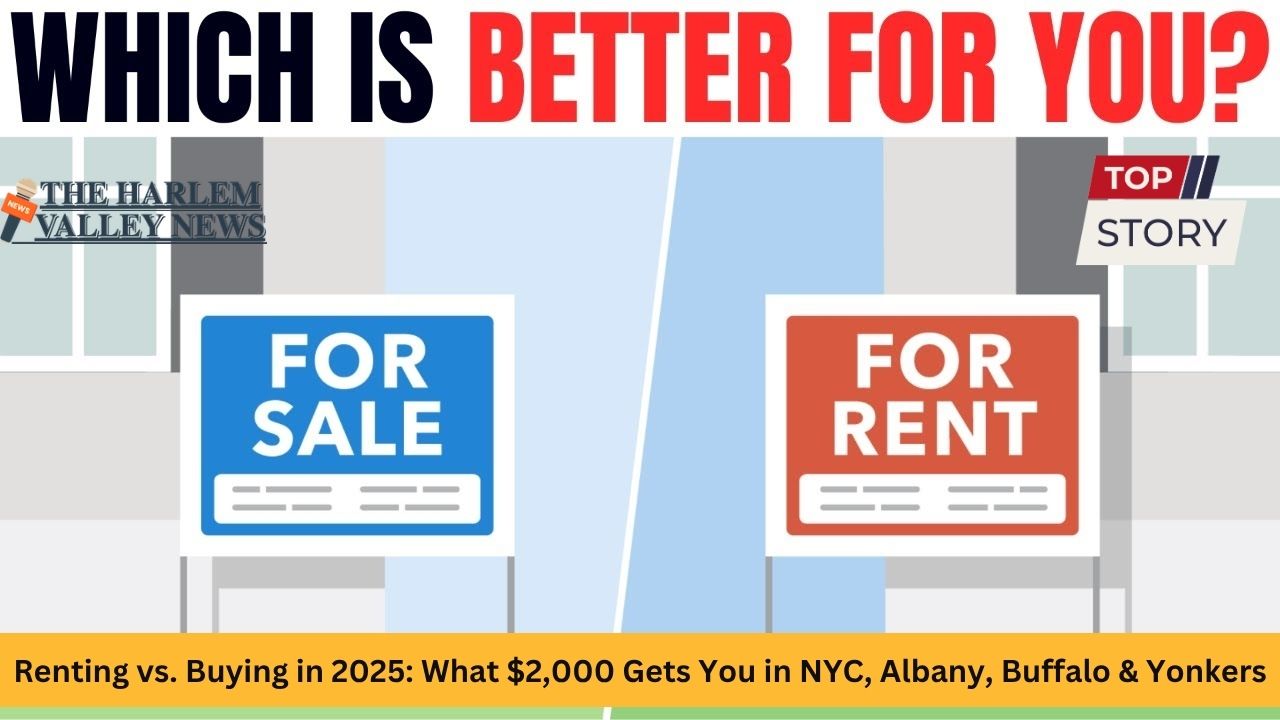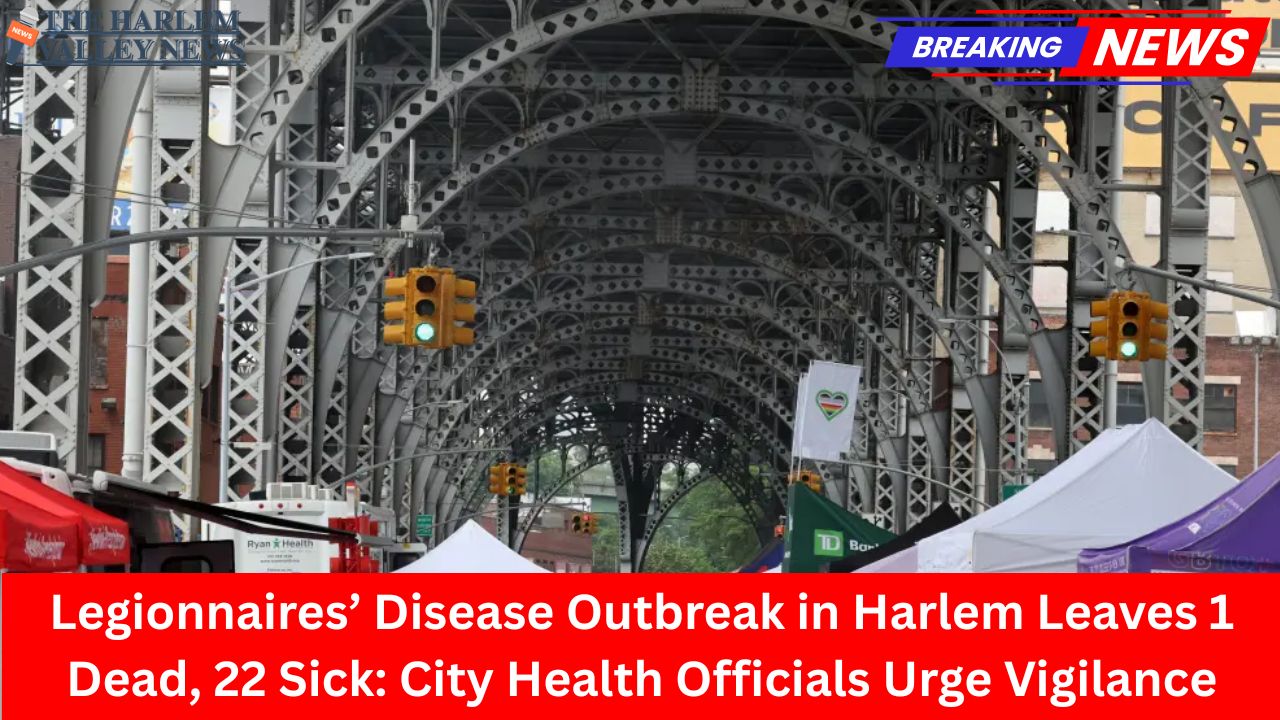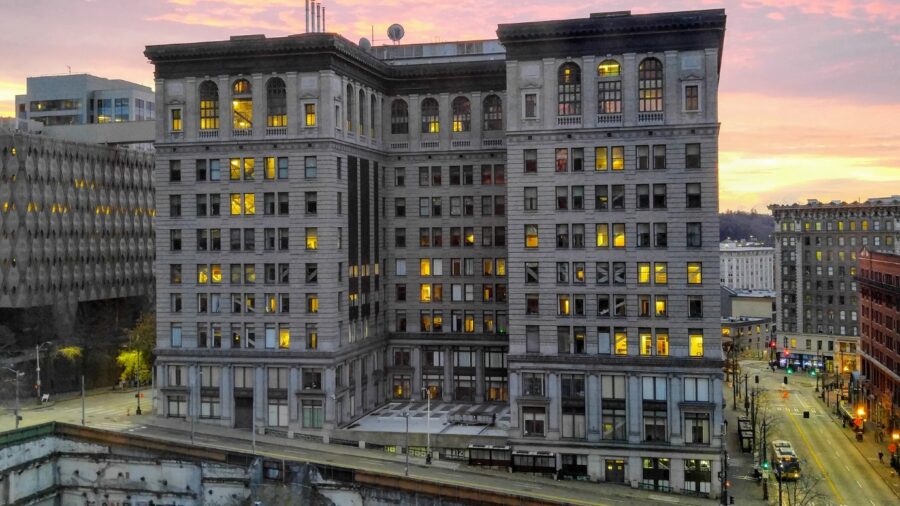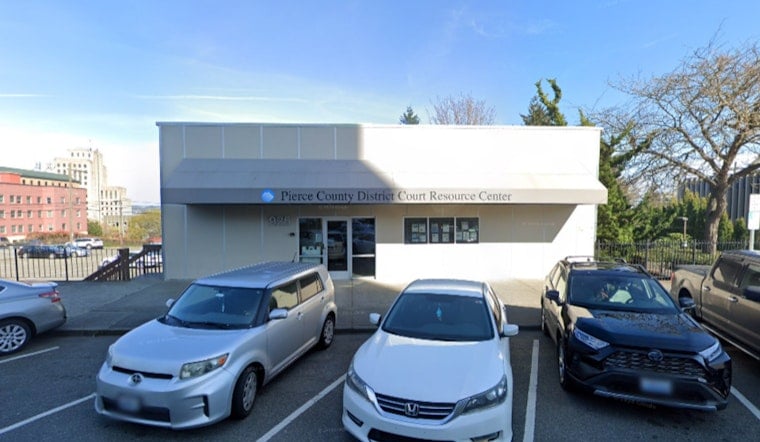As we move into 2025, the question of whether to rent or buy a home has become more complex than ever—especially for those living in or considering relocating to New York State’s most prominent cities: New York City, Albany, Buffalo, and Yonkers. With remote work still reshaping real estate dynamics and interest rates affecting affordability, $2,000 per month can mean vastly different things depending on where you look and whether you rent or aim to buy. This in-depth guide demystifies what $2,000 per month gets you in each city, comparing the rental and purchasing landscape, major market trends, and financial realities in 2025.
Overview: The $2,000 Housing Benchmark in 2025
Across the U.S., $2,000 per month is a crucial reference point for both renters and buyers. With average U.S. rents hovering around $1,637, this budget is comfortably above average in many regions but may fall short in high-cost urban centers. For buyers, this figure is often used as a ballpark for an “affordable” monthly payment, including mortgage, taxes, and insurance. In New York State’s cities, however, the purchasing power of this budget varies dramatically—a function of local prices, rent trends, and property taxes.
The State of Renting in New York’s Major Cities
New York City: The Big Apple’s Sky-High Rents
-
Median Rent: As of July 2025, the median rent in New York City has reached a record $4,700 for all apartment types. The average rent stands at $4,023, substantially higher than the national average.
-
Rental Market Landscape: In many Manhattan and Brooklyn neighborhoods, $2,000 will typically only cover a studio or small one-bedroom apartment, often in outer boroughs or less central locations. Popular areas like Hudson Yards, Soho, and Tribeca are far beyond reach for this budget.
-
Apartment Options for $2,000: When searching at this price point, expect limited space—perhaps a modest studio in Queens, a shared two-bedroom arrangement in Brooklyn or the Bronx, or an even smaller space in Manhattan.
-
Rental Competition: Vacancy rates remain tight with consistent upward pressure on prices and brisk competition for affordable units. The city’s rental market has rebounded strongly from the pandemic era dip.
Albany: Affordable Capital Comfort
-
Median Rent: The average rent in Albany as of July 2025 is around $1,532 per month, with two-bedrooms typically under $1,900.
-
Apartment Options for $2,000: With $2,000 in Albany, renters can afford a newer two- or even three-bedroom apartment in convenient neighborhoods like Pine Hills or Dunes, often with amenities such as in-unit laundry or parking.
-
Rental Inventory: The Albany rental market provides ample choice for $2,000, making it suitable for families or professionals seeking more space and comfort.
Buffalo: Value and Variety Upstate
-
Median Rent: Buffalo’s average rent sits comfortably at $1,500, with two-bedrooms often ranging from $1,200 to $1,600.
-
What Can $2,000 Get? Renters can afford large apartments—sometimes three-bedroom units—or even a single-family house. Neighborhoods like Elmwood Village and North Buffalo offer charm, space, and accessibility at this budget.
-
Rental Trends: Buffalo remains much more affordable than downstate cities and has a relatively stable rental market.
Yonkers: The Expensive Suburban Alternative
-
Median Rent: Yonkers shows an average rent of $2,600, about 41% higher than the national average.
-
What Can $2,000 Get? For $2,000, renters are typically looking at one-bedroom apartments or older two-bedrooms, possibly in less central neighborhoods. Downtown and waterfront properties often exceed this price.
-
Rental Availability: Yonkers is competitive, especially for commuters to Manhattan, with spacious options available above the $2,000 mark, but more limited selection at or below it.
The Reality of Buying: Mortgage Power for $2,000/Month
Affordability Breakdown: What Does $2,000 Buy?
Assuming today’s mortgage rates around 6.5% and a 20% down payment, $2,000 per month (including taxes and insurance, which can be high in New York) generally supports a loan in the $250,000–$325,000 range depending on taxes, HOA dues, and insurance. Each city’s median home price determines how close, or far, this budget comes to affording a median property.
City-by-City Purchase Scenarios
New York City
-
Median Sales Price: $768,000 across the city. Manhattan is much higher; Queens and the Bronx are lower but still above the national average.
-
What Can You Afford? For $2,000/month, home buying choices are severely limited—most condos, co-ops, and single-family homes are above what you can afford. Studios or small one-bedrooms in the boroughs farthest from Manhattan might be possible.
-
Typical Buyer Experience: Many would-be buyers in NYC at $2,000/month remain priced out or must consider co-op shares, micro-condos, or units needing repairs.
Albany
-
Median Home Price: $295,000 as of June 2025.
-
Affordability: $2,000/month (with a 20% down payment) is sufficient to buy a median-priced home in Albany, including charming single-family homes in established neighborhoods.
-
Buyer Landscape: With reasonable property taxes compared to NYC, homeownership is within reach for many residents at this monthly payment.
Buffalo
-
Median Home Price: Around $250,000.
-
Affordability: $2,000/month easily covers mortgage, taxes, and insurance for a wide range of homes in Buffalo, from classic city houses to newer suburban builds.
-
Home Choices: Large single-family homes or townhouses are possible, even in desirable locations.
Yonkers
-
Median Home Price: $670,000 as of mid-2025.
-
Affordability: $2,000/month would restrict you mostly to condos, co-ops, or small single-family homes in less central neighborhoods. Taxes in Westchester County are high, reducing the purchasing power of this payment.
-
Buyer Landscape: Entry-level buyers face tight inventory and significant competition, similar to other suburban markets near NYC.
Rental vs. Buying: Comparing Lifestyle, Risks, and Rewards
Renting
-
Flexibility: Moving for work, family, or lifestyle is easier—with less commitment and lower upfront costs.
-
Lower Maintenance: Repairs, taxes, and major upgrades fall to the landlord, not the tenant.
-
Rising Rents: In 2025, rents are rising across most of New York despite new construction and stabilization measures.
Buying
-
Property Appreciation: Homes in Albany and Buffalo have seen steady price gains, with Buffalo homes up to 60% of the national median—offering value and stability.
-
Equity Building: Monthly payments go toward ownership, not just expenses.
-
Property Taxes: NY State, especially Westchester County (Yonkers), has high taxes that can strain monthly budgets.
Market Trends, Stats & Projections for 2025
-
NYC Median Rent: $4,700 (up 6.6% year-over-year), Manhattan median sales price $1.15 million.
-
Albany Median Rent: About $1,532; home prices $295,000, up 5.4% from last year.
-
Buffalo Median Rent: $1,500; home price near $250,000.
-
Yonkers Median Rent: $2,600; median home price $670,000 (1-bedroom condos average $196,000; 3-bedrooms above $700,000).
-
Buying Power: Only Buffalo and Albany provide broad homeownership access at $2,000/month, while NYC and Yonkers are unaffordable for most at this budget.
Key Takeaways: What Should You Do With $2,000/month?
-
NYC: $2,000 is insufficient for median rentals or entry-level homes—expect to rent a studio or share an apartment. Buying is mostly out of reach.
-
Albany: $2,000 offers buyers and renters ample choice—three-bedroom homes or apartments are realistic and comfortable.
-
Buffalo: Excellent options for both renting and buying; substantial space and quality homes available at or below this threshold.
-
Yonkers: Challenging market—one-bedrooms are possible to rent, and entry-level purchases mean condos/co-ops, with high taxes factored in.
Conclusion
The journey of deciding whether to rent or buy in 2025 boils down to local market realities and personal priorities. For New Yorkers with $2,000 per month, location is everything. That same sum which rents a studio in Manhattan could buy a three-bedroom bungalow in Buffalo, or a family-size condo in Albany. Yonkers sits in the middle, offering access to the city but with higher rents and prices. As always, weigh not just the dollars and cents, but your desired lifestyle, long-term plans, and comfort with market risk. In the end, your $2,000 goes furthest upstate—whether you rent or buy—and least far in the heart of New York City.













Leave a Reply